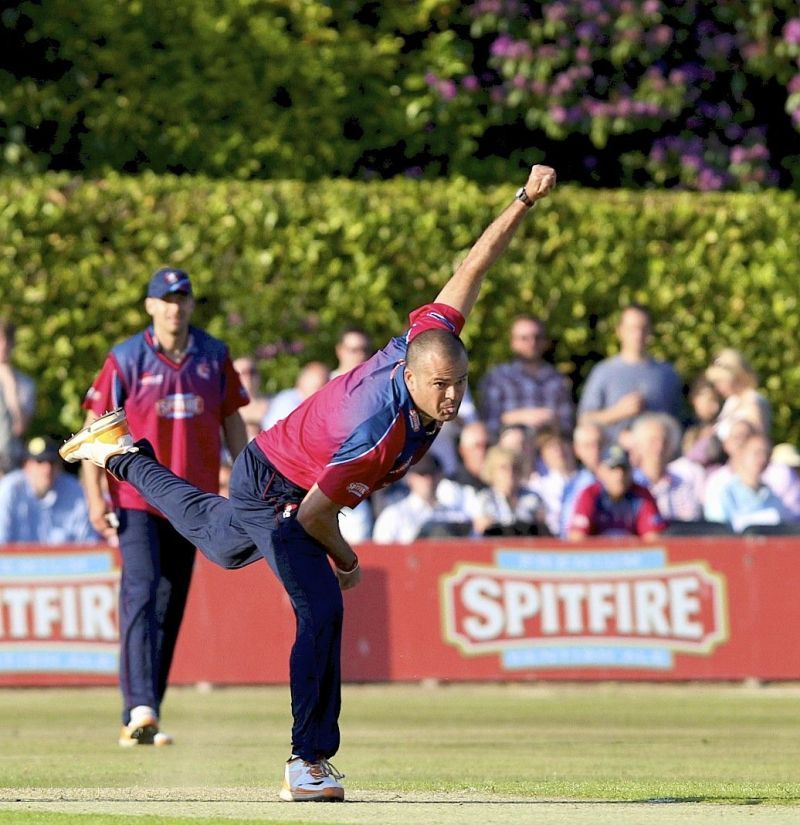
How to swing the cricket ball without saliva

Using saliva to shine the ball is such a common practice that nobody ever seems to have questioned the hygienic hazard that it brings forth up until – and that is mainly because of COVID19. In fact, the frequency at which this is done in every game actually inspires children to do the same with tape-tennis ball.
As we all know, no amount of spit can help keep the shine on a tape tennis but it speaks volume of the trend that has been set when it comes to using saliva to keep the shine of one side of the ball intact.
The idea is simple: keep rubbing one side of the ball with saliva and the shine of it is preserved, which in turn helps swing the ball. Now, however, with the shadow of COVID19 following everyone like a stalker, it has become quite impossible to follow this protocol.
Indeed, UK Prime Minister Boris Johnson recently went on as far as claiming that a cricket ball is a “vector of the disease”.
As a result of the complications that could potentially arise from the use of saliva to rub the cricket ball, ICC has banned the use of saliva during the ongoing Test series between England and West Indies.
While it is a fathomable decision, it is something that will bring about an extra challenge for bowlers, who must now look for new ways to swing the ball.
“The maintenance of the ball is key, particularly in England,” says Charl Langeveldt to Betway’s Insider, the South Africa men’s bowling coach, who has 116 wickets in 72 ODIs and six Test matches to his name from his time in international cricket.
“It’s a big plus for one of our bowlers if he can use saliva – it’s a skill looking after the ball. We really focus on polishing it. Somebody gets assigned to looking after the ball and making sure that one side is shiny.
“That is especially the case in England, because they use the Dukes ball. Once one side of a Dukes ball gets scuffed up and you polish the other side, it does swing a lot more and it swings for longer.
“I don’t know how they’re going to do it. I’m going to be interested to watch how swing bowlers like Jimmy Anderson manage.”
As a result of ICC’s decision, bowlers will now have to constrain themselves and change their habit. As one would assume, using saliva to shine the ball is just as habitual for a bowler as it is to bowl. Indeed, English bowlers have admitted to finding it difficult to curb their instincts.
There is also the aspect of swing. However, Woakes believes that the ball will swing naturally due to the favourable English conditions.
“Luckily enough, the ball moves around in England anyway,” he said in May.
He also credited the Duke balls for their swinging nature.
“The Dukes always gives you a little bit of something, so hopefully that can continue. We will find ways to shine the ball, whether that’s being a little bit more aggressive on the shining side of things. It’s going to be interesting over the next few weeks, trying to figure out the best way to get the ball moving.”
One of the trademarks of English conditions is that clouds always loom above in the sky, which in turn helps a bowler to generate swing.
Langeveldt, who played for Somerset, Leicestershire, Derbyshire and Kent during four spells in the County Championship, also believes that the weather conditions played a huge role whenever he tried to swing the ball during his spells.
“I found it a lot harder when the sun was out,” he says, “especially down south at venues such as the Ageas Bowl. For some reason, it was hard to swing the ball there when overhead conditions weren’t favouring the bowler. Overhead conditions do help the ball to swing a lot more in England.”

It is perhaps for this reason that England have produced some fine swing bowlers. Indeed, James Anderson is regarded as one of the best swing bowlers of all time.
However, he is not a simply home ground bully and Langeveldt explains how the English pacer manages to use his wrist in order to generate swing.
“I use Anderson a lot because he’s got the perfect wrist,” says Langeveldt. “He bowls it out and in. You don’t want to change bowlers’ styles too much, but I think getting the wrist in a strong position is really important.
“If you look at a guy like Kagiso Rabada, he was more of a seam bowler when he came onto the scene, and he worked on getting the seam position and wrist in a stronger position to be able to swing the ball more.
“Then there’s Anrich Nortje, who bowls 140-145kph but needs a bit more variety. Anderson is a great example to these guys.”
While the English conditions, couple with the Duke balls, make it a haven for the pacers there, pacers from different countries don’t get the same advantage.
In this regard, the South African used the example of Indian pacer Bhuvneshwar Kumar as he hailed the right-handed pacers as one of the best swing bowlers that he has ever seen.
“Kumar has been brilliant,” says Langeveldt. “He swings it both ways in Indian conditions and then when he came to South Africa he was successful.
“The subcontinent is totally different. They play with an SG ball, which swings for a short while but gets scuffed so quickly.
“You have to be more attacking, hitting the stumps and making the batsmen play, and the length is probably a bit shorter because the ball doesn’t swing as much.”
Langeveldt also spoke about Dale Steyn, who has 438 Test wickets to his name and is arguably the greatest South African pacer of all time, stating that Steyn’s ability to keep the ball close to the stumps forced the batsmen to play him, which in turn allowed the South African to pick up wickets at regular intervals.
“Steyn was always close to the stumps,” says Langeveldt, "so you had to play at most of his deliveries. It wasn’t always big swing, but he forced the batsmen to play a lot more than someone like Jimmy.
“He adjusted to conditions, so if the ball was swinging too much he would come a bit wider and change the angle that he was bowling from. He was brilliant in that way.”
In conclusion, Langeveldt basically tells the universal truth when it comes to pace bowling: keep tight and on the stumps. If a bowler does that, even a little hint of swing can reap huge rewards.